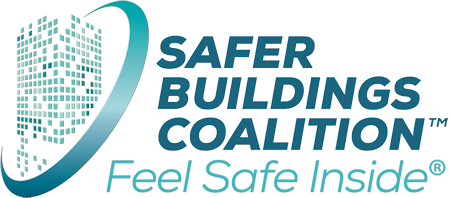In-Building Public Safety Vertical Location Technologies May Solve Large Building Communication ProblemsPosted on May 26, 2016. Large buildings pose special challenges for public safety communications for two main reasons: Cell signals can have a tough time penetrating walls, and traditional navigation technologies do not provide vertical location information, a.k.a. z-axis data. Several government bodies, including the First Responder Network Authority (FirstNet), the Institute for Telecommunication Sciences (ITS) and the Federal Communications Commission (FCC), are in a hurry to fix those problems. FirstNet is looking into a variety of technologies, including barometric air-pressure sensors that can be installed in mobile devices to help determine altitude, much in the same way altimeters are used in airplanes. Researchers at FirstNet’s technical headquarters in Boulder, Colo., have also been examining terrestrial location service beacons capable of penetrating buildings that block GPS signals, and smart building technology made up of Wi-Fi and Bluetooth Low Energy beacons. Two other location techniques under examination by FirstNet are Uplink Time Difference of Arrival (UTDOA) and Observed Time Difference of Arrival (OTDOA). Many networks today use UTDOA to determine location by deploying special receivers at cell sites to measure uplink signals from devices. With OTDOA, the device measures the time difference between downlink positioning signals from several cell sites, and the measurements then are sent to a location server. Finally, FirstNet is researching RF (radio frequency) pattern matching technology in which the network measures signal levels from several cell sites and matches the data to a database of RF patterns.
Standards For Establishing In-Building Public Safety Vertical Location TechnologiesMeanwhile, vendors are busy working with commercial wireless carriers on similar technologies in compliance with a 2015 FCC order to help emergency responders more accurately locate 911 callers indoors. By 2018, nationwide wireless carriers have to provide uncompensated barometric data – from handsets capable of delivering it – to public safety answering points. The carriers were also given three years to come up with a proposal for z-axis accuracy and submit it to the commission for approval. By 2021, they have to deploy z-axis technology or dispatchable location technology that achieves the approved metric in the 25 largest cellphone market areas. Also by 2021, they must be able to provide 50-meter horizontal accuracy for 80 percent of all wireless 911 calls. The wireless telecom association, CTIA, has established a plan for testing technologies to see if they comply with the FCC mandates. Toward the end of this year, technologies not currently deployed will be tested in 20 buildings in Atlanta and San Francisco. As the industry gears up for the tests, vendors are announcing a variety of advancements in the field. TruePosition Inc., based in Berwyn, Pa., is championing a new set of capabilities called Machine to Machine/Internet of Things (M2M/IoT) for its TrueFix location system. The system, designed for emergency call location purposes as well as enterprise applications, uses Wi-Fi location technology to optimize performance indoors and in dense urban areas. Vertical location information is available for devices with barometric pressure sensors. The most recently announced capability aims to make it easier to locate small devices in environments without GPS by installing an Ultra-Light Software Development kit on them. NextNav LLC, of Sunnyvale, Calif., is promoting upgrades to its Metropolitan Beacon System. The company calls the beacon system a “terrestrial constellation” that brings GPS-like positioning performance to indoor and dense urban environments. The system is touted as delivering high precision altitude information, in addition to latitude and longitude information, without using up expensive spectrum. Canadian vendor Rx Networks recently announced a new business unit, Fathom, with products designed to help manage large-scale beacon deployments. The company is touting its Fathom Hub as a way to turn stand-alone beacons into a network capable of reporting on the location and status of all beacons in the area. The technology also transmits location data from Bluetooth Low Energy devices. These vendors are among more than two dozen companies and associations that make up the Z-axis working group, which was set up by CTIA to develop a plan for delivering barometric pressure data to public safety answering points. The group will also evaluate vertical location technology performance once results from the tests are in. By Caron Carlson – Safer Buildings Coalition ContributorLearn more about joining the SBC by clicking here. Also be sure follow us on our Facebook page, Twitter (@SaferBuildings), and connect with us on LinkedIn.
|


